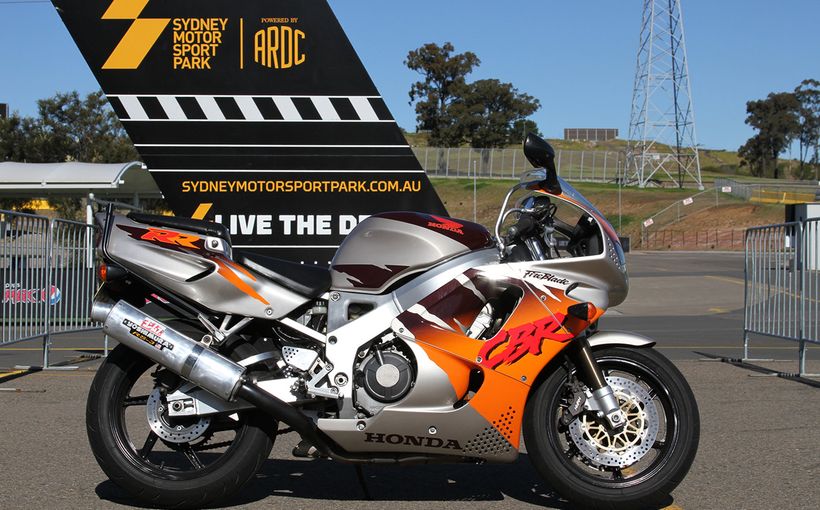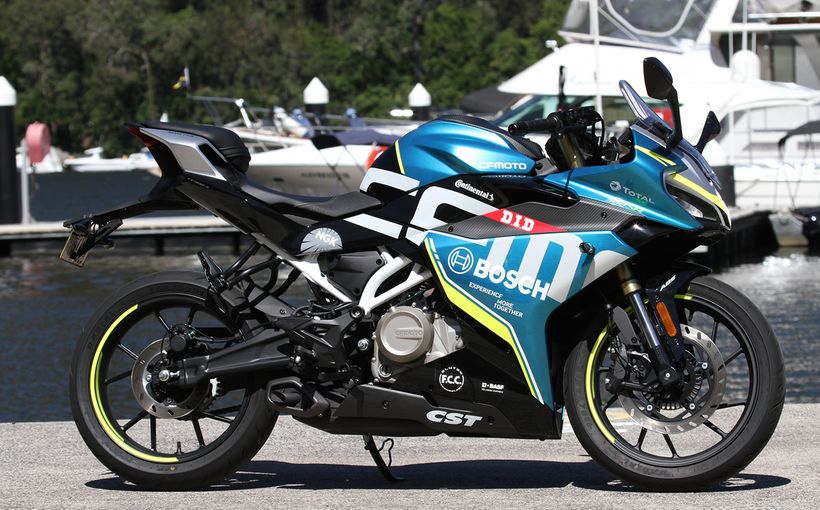250 Gold Star - Honey, I shrunk the Goldie.

Phil Reeves has long been an admirer of the classic BSA Gold Star and hankered to own one, but admits that his finances couldn’t quite stretch to the telephone numbers asked for a nice example. So, like the enterprising chap that he is, he decided to make his own, with one major difference – the capacity.
Not that this is a recent achievement – the project began more than 30 years ago, when Phil was a teenager and his late father was an enthusiastic and popular member of the motorcycle social set. “One of the reasons that this bike was made,” Phil says with a dry smile, “apart from the fact that I wanted a Gold Star and couldn’t afford a real one, was to turn up to shows and rallies and things, and watch the fellows wandering around the bike and arguing whether it was the way it had come out of the factory. Some time after I first built it dad and I took it to a show and parked it, and I went for a walk around the exhibits. When I came back dad’s sitting there chuckling away to himself. I said ‘what’s so funny?’ and he said, ‘see those two old blokes over there – they’ve been here for the past half hour arguing about whether this was a real bike or not; they had a fair dinkum argument!’ Dad was just falling apart!” In fact, the little bike has caused stirs since the moment it first fired a shot. “At one show”, continues Phil, “a bloke asked me if he could photograph the bike – not just a happy snap but a good photo – and I said sure. Anyway, it turned out that he printed a big poster of the photo with the title “British Classic. The BSA Gold Star” and was trying to sell them, until somebody pointed out that’s not a real Gold Star - that’s Phil’s hotrod! He wasn’t very happy.”

Unless you are well versed in the intricacies of the model, it was an easy trap into which to fall, because, at least from a distance, this machine looks like it had just rolled out of Small Heath. “The bike was built from all sorts of bits and junk and parts that were easily found at the time ”, explains Phil. “The project actually started when I found a set of C11 crankcases in some junk. They were stamped XC11 and I thought, ‘Hmmm – X stands for an unknown quantity’. The barrel is a C11G, cast iron. I am investigating casting an alloy barrel, but that’s not as easy as it sounds because it has an integral pushrod tunnel. So that’s difficult to say the least. The head is where things fall in a funny hole – it is actually an Ariel Colt head which was chosen simply because it was alloy. The Colt engine is actually a 200 cc version of a C11 motor but with an alloy head rather than cast iron. There are a few little tricks to make this work. It has been ported to take C11-sized valves, which are larger than the Colt, and the combustion chamber has been made bigger to match the 250 cc bore size. The head is actually shorter (in depth) so I had to make shorter pushrods. The rocker cover is a C11 but it had to be cut and welded to fit the Colt head.”
Down below, the bottom end is all C11. “I thought about putting a roller bearing in the timing side to replace the bush, but there is not the room to do it, and it doesn’t seem to need it anyway.“ Phil continues. “ The rod is C11 and the piston is from a Suzuki GS1000. This is just 1 mm larger than the BSA piston so it goes straight in with a rebore, and the gudgeon size is only slightly larger so I just reamed out the small end bush. The Suzuki piston also has a higher dome so that means more compression – about 10.5:1. It doesn’t like unleaded petrol – I use 100 octane racing fuel which works very well.”

Feeding the engine is a 30 mm Amal 29-type carburettor to which Phil has fitted twin float bowls, which he made by cutting and machining to get the correct angle. Perhaps the most complex job was the ignition system, which would have been straightforward enough had it not been for the quest to keep the plot looking as much like a Gold Star as possible. Phil explains the procedure. “ The timing side of the engine is a story in itself. Gold Stars have a mag/dyno all in one unit, but I couldn’t use this system because it’s too tall and wouldn’t fit under the carburettor. I maintained the generator as standard to keep the Gold Star look, but on the C11 timing case there is normally a distributor sticking out the front, which I didn’t want, so that was done away with. The top was cut off and turned into the drive for the tacho – it’s a 2:1 drive so that was fine. The timing cover is normally almost flat, but C12s had the ignition points on the side of the engine driven of the end of the camshaft, but if I put that on I couldn’t have a generator drive, that disappears because they had an alternator in the primary chain case, so I maintained the generator drive, modified all the cases, used a C12 points set and case, welded that to the cover, so that the points drive off the end of the cam as with the C12. Almost Gold Star in shape, and no distributor. That was a bit of homework to figure out, but it all works well”. And it looks right too.
Gearbox is a C11G four speed. Phil says that although different gearbox casings were used, the internals of the C11G box were the same as the standard ratio Gold Star. When it was first built, the 250 had a tin primary chaincase, but this was soon replaced with an alloy version, as Phil explains. “ This came from a BSA A10, which is basically the same case as a Gold Star except that the Goldie had a cut-out for the mag/dyno. But I didn’t need that so I decided to use an A10 as they were plentiful, except that it didn’t fit – the A10 is shorter – so I had to make a spacer behind it and actually move the whole lot backwards so it is out of centre to the crankshaft and clutch. It just fits and allows adjustment of the primary chain as well.”

So that’s the motive power; what about the cycle parts? The 250 GS uses a C12 swinging arm frame and front forks, except for the top fork covers/headlight mounts. Phil found a set of damaged covers at a wrecker’s and modified them to remove the normal headlight attachments. The headlight unit itself is from a C11 with a set of ‘spars’ to hold it in place - similar to the Goldie - that Phil also made. Sitting atop this is a fabricated platform to hold the twin instruments. The speedo is a standard Smiths item but the tacho is actually a converted speedo, done by a friend of Phil’s because a matching rev-counter just wasn’t available. A Triumph steering damper – naturally with the lettering removed – looks right at home, as do the Reeves-made clip-on handlebars.
The front mudguard is a BSA C15T which has been chrome plated and the front hub and brake is C12 laced to an Akront alloy rim and the brake has had ventilation ducts added with screens from a Triumph to look the sporting part. At the rear is another C12 hub, also laced to an Akront rim. Rear mudguard is a chromed C12 item, with a Bantam seat that looks exactly right. A modified A10 oil tank graces the right hand side, with a battery and tool box sourced from a C12. “The Gold Star had a mag/dyno so they didn’t have a big battery to speak of and a large tool box instead, but I needed the battery so that’s a departure from the Goldie look,” Phil says. “I also tried a C12 rear chain guard but that looked ugly so I made one up as close in appearance to a Gold Star as I could.”

Of course, two of the most instantly identifiable and evocative parts of a normal Clubman’s Goldie are the fuel tank and the exhaust system. The tank is from a C12, with the knee pads removed and a Triumph T bar fuel cap, which looks like a Goldie, fitted. It has been chromed plated, silver painted and red pin-striped, with an extremely handsome badge from a D14 Bantam. “ It had a big gold star motif, looked right and went straight on”, says Phil. “Then exhaust pipe was made many years ago here in Adelaide by Reband Engineering. It wasn’t quite what I had in mind, but one day I will do what I had in mind. The silencer is a baby Gold Star, but it didn’t make the right sound when I first put it on. It had too many baffles in it so some serious attacking with a drill was done. Now it almost makes the same ‘twittering’ sound as a real Gold Star.” The sticker on the oil tank came from a very late model C25-based Gold Star – a model eschewed by purists of the marque but which fortunately had the right decals. The BSA stickers on the side covers and tail light bracket are correct reproductions of the originals.
Performance? “Better than a C11!” laughs Phil. “It has a bit of a cam which I had specially ground for it, and the higher compression helps quite a bit.” And this is no show pony, because in the 30 years since its inception, Phil has rattled up more than 49,000 miles, requiring only one top-end rebuild in the process. “I used to ride it quite a bit when I was younger – on rallies and to shows, and it won quite a few trophies”. One such trophy is the O.F.J. Reeves Memorial Shield, named in honour of his father, for motorcycles 250 cc and under, and achievement of which he is immensely proud.
Now, after three decades, Phil is considering building a second 250 Gold Star. “My lady friend rides a Ducati and she keeps saying how she wants to turn up at a show on another 250 Gold Star and park them together to see the chaos they would create. I have been thinking of building another one for that reason. I have been collecting parts for years, but the project has stalled a bit at present because white ants got into my shed and ate all the boxes, so now all I have is a heap of parts sitting in powder on the ground and I have to sort all that out.” When you think that the donor bikes for the majority of the components for the 250 are amongst the most pedestrian models to come out of Birmingham, it is all the more credit to Phil and his father for not just dreaming up the concept, but following it through and overcoming the various technical hurdles involved.

One clear Saturday Adelaide morning Phil took the machine out for our camera and dressed in period leather jacket, silver pudding basin and Stadium goggles, hammered around with the little gem twittering happily. It could have been the 1960s and the Ace Café all over again. Almost predictably, during the photo session, we encountered a police officer who was busily setting up a radar speed camera and who immediately stopped work to admire the 250. “My brother used to have one just like this”, he said, staring longingly at the glittering little jewel. “Is that so?” replied Phil. “Fancy that”.
Protect your Classic. Call Shannons Insurance on 13 46 46 to get a quote today.










